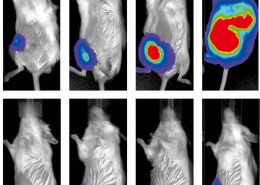From classic ethology to modern and interdisciplinary computational and neuro-ethology
Source: College of Humanities and Social Sciences
Published on 2021-06-09
Christoph David Dahl

Dr. Christoph Dahl in his laboratory, developing an insect treadmill.
Ihave a background in psychology and neuroinformatics (equ. MSc at the University of Zurich, Switzerland) and I did my doctoral studies in monkey neurophysiology at the University of Tübingen and the Max Planck Institute for Biological Cybernetics, Department Physiology of Cognitive Processes (Prof Nikos K Logothetis), Germany.
I received postdoctoral training at the Primate Research Institute of Kyoto University, Japan, at the Psychology Department of National Taiwan University, Taiwan, and at the Department of Comparative Cognition of University of Neuchatel, Switzerland. In 2019, I came to join the faculty of Graduate Institute of Mind, Brain, and Consciousness (GIMBC) at Taipei Medical University as an associate professor. I also maintain an affiliation at Shuang Ho Hospital, New Taipei.

Dr. Christoph Dahl with his colleague, Professor Jiun-Lin Horng, and two students, Sofia Ormazabal and Ching-Hua Yu.
Animals, including humans, face the challenge of surviving in an ever-changing environment. Behaviour, the ultimate product of the brain, turned out to be the most successful strategy to deal with the environmental unpredictabilities and irregularities. At the same time, behaviour has an immediate effect, unlike natural selection. It is in the interest of neurosciences to address the question of how an organism in general and a brain in particular implement behaviour (Cacioppo & Decety, 2011). Historically, behavioural deficits have been observed for thousands of years, but only in recent times we have acquired the means to address the structure-function relationship underlying behaviour and the brain (Kennedy & Adolphs, 2012).
Consequently, I believe, there is no more essential way to study the brain via its functions in the context of behaviour. Thus, the essential question to ask is how the brain and the central nervous system translate biologically relevant information from the environment into natural behaviour. The challenges are apparent: Behaviour and the brain are highly complex. Behaviour becomes even more complex in its social manifestation, when not only the behaviour of an isolated individual is studied, but the behaviour of the individual and its group. Such analysis would encompass not only the subjected individual and its responses, but the recipient individuals and their behavioural responses. All together, it seems impossible to map complex behaviour acquired onto an even more complex neural correlate like the brain (Adolphs, 2010). Then, how can we account for the complexity and where do we start our examinations?
The classic approach in ethology, the sciences of behaviour, is that one first determines a species′ behavioural repertoire, the so-called ethogram, to code behavioural elements according to different sampling regimes (Altmann, 1974). This, however, would limit our findings to a set of general behavioural patterns which we predicted to find in a given species. It would also disregard the complexity of behaviour by generalising across behavioural patterns an assigning them to classes. A more modern idea is that complex behavioural actions exhibited by animals and humans alike are series of concatenated smaller, partly stereotyped movements. These movements can be subjected to processes of quantification and, hence, become measurable. This new approach dictates that we aim at extracting the smallest measurable and identifiable elements of behaviour, which constitute larger behavioural patterns and ultimately the animal′s “body language” (Wiltschko et al., 2015). To this end, I use automated procedures that track positions and body movements of multiple animals at high temporal and spatial resolutions using computer vision technology and machine learning.
This relative novel domain referred to as computational ethology bridges traditions and modernism and leads ethology, traditionally a subdiscipline of biology, into an interdisciplinary research domain (Dahl, Ferrando & Zuberbühler, 2020; Dahl et al., 2018): This offers a collaborative framework for biologists, neuroscientists, computer scientists, physicists and physicians.
This approach produces data which is interesting per se: e.g., we can learn about an animal species by asking ecologically relevant questions. Importantly, with this approach we can also extrapolate to other domains and related questions, such as the above mentioned linkage between behaviour and the brain: We know, for example, that behavioural symptoms are often overlapping and subjectively assigned to neuropsychiatric disorders or, in other words, to functional failures in the central nervous system. Neurotransmitters are substances that amplify and modulate electrical signals between neurons in the brain. When the functional balance of neurotransmitter is altered, failures of central nervous system function occur, ultimately leading to changes in behaviour.
Thus, in a second direction of my research I neurochemically target neurotransmitter systems and determine modulations of behavioural elements caused by the treatment. With this combination of neurochemical stimulation and behavioural analysis, we can then investigate how various agonists or antagonists, targeting particular receptor types, selectively modulate certain behavioural elements, while leaving others unaffected. This leads to a re-definition of disease models, such as social anxiety, autism spectrum or social communication disorders, characterised at the most elementary level of behavioural modifications. In a third line of research, I follow a more direct way of addressing the behaviour–brain relationship by employing electrophysiologcial recordings (Dahl, Logothetis & Kayser, 2009, 2010) in the behaving organism. Here, I try to correlate neural activity, elicited in distinct anatomical regions of the brain, with the exhibited behaviour. By virtual manipulations of the animal’s environment we can then examine functional divisions of anatomical regions during complex behaviours.
























-260x185.jpg)

















































與連江縣衛生福利局陳美金局長簽署醫療合作備忘錄-260x185.jpg)

















期許永續發展成為醫療產業新契機。-260x185.jpg)
























































































































































































































































































































































































































































































